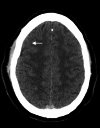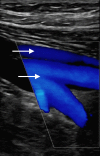COVID-19-Induced Hypoxia With Accompanying Syncope Event and Traumatic Injury
- PMID: 34040903
- PMCID: PMC8139605
- DOI: 10.7759/cureus.14602
COVID-19-Induced Hypoxia With Accompanying Syncope Event and Traumatic Injury
Abstract
The Centers for Disease Control and Prevention identified the first case of the novel coronavirus disease 2019 (COVID-19) on January 21, 2020 in the United States. Since its arrival, the virus has caused widespread havoc on the nation as a whole as well as on all individuals. The coronavirus family is not new to the field of medicine. In fact, the viral pathogenicity dates back to the early 1960s, with more information on the respiratory preference and the ability to cause acute respiratory pathology coming later in 2002. The novel coronavirus, severe acute respiratory syndrome coronavirus 2, causes a disease commonly referred to as COVID-19, which has a well documented course of severe respiratory pathology along with interesting systemic consequences that often complicate the clinical picture. This case presents an otherwise healthy young 35-year-old male who contracted the novel coronavirus, leading to multi-organ hypoxia and triggering a syncopal episode which resulted in physical trauma to the head leading to a minor subarachnoid hemorrhage.
Keywords: acute respiratory distress syndrome (ards); acute trauma care; anti-coagulation; brain hypoxia; coronavirus disease; coronavirus pandemic; covid-19; d-dimer; syncope.
Copyright © 2021, Ordookhanian et al.
Conflict of interest statement
The authors have declared that no competing interests exist.
Figures




Similar articles
-
Human and novel coronavirus infections in children: a review.Paediatr Int Child Health. 2021 Feb;41(1):36-55. doi: 10.1080/20469047.2020.1781356. Epub 2020 Jun 25. Paediatr Int Child Health. 2021. PMID: 32584199 Review.
-
Pathogenesis-directed therapy of 2019 novel coronavirus disease.J Med Virol. 2021 Mar;93(3):1320-1342. doi: 10.1002/jmv.26610. Epub 2020 Nov 10. J Med Virol. 2021. PMID: 33073355 Review.
-
[Comparison of clinical and pathological features between severe acute respiratory syndrome and coronavirus disease 2019].Zhonghua Jie He He Hu Xi Za Zhi. 2020 Jun 12;43(6):496-502. doi: 10.3760/cma.j.cn112147-20200311-00312. Zhonghua Jie He He Hu Xi Za Zhi. 2020. PMID: 32241072 Chinese.
-
Systematic Review of Clinical Insights into Novel Coronavirus (CoVID-19) Pandemic: Persisting Challenges in U.S. Rural Population.Int J Environ Res Public Health. 2020 Jun 15;17(12):4279. doi: 10.3390/ijerph17124279. Int J Environ Res Public Health. 2020. PMID: 32549334 Free PMC article.
-
A Case Report of Rapidly Lethal Acute Respiratory Distress Syndrome Secondary to Coronavirus Disease 2019 Viral Pneumonia.Cureus. 2020 May 21;12(5):e8228. doi: 10.7759/cureus.8228. Cureus. 2020. PMID: 32582489 Free PMC article.
Cited by
-
Brain Pathology in COVID-19: Clinical Manifestations and Potential Mechanisms.Neurosci Bull. 2024 Mar;40(3):383-400. doi: 10.1007/s12264-023-01110-0. Epub 2023 Sep 16. Neurosci Bull. 2024. PMID: 37715924 Free PMC article. Review.
References
-
- Centers for Disease Control and Prevention: symptoms of coronavirus. [Feb;2021 ];https://www.cdc.gov/coronavirus/2019-ncov/symptoms-testing/symptoms.html 2021
-
- Centers for Disease Control and Prevention: key facts about Influenza (flu) [Feb;2021 ];https://www.cdc.gov/flu/about/keyfacts.htm 2019
Publication types
LinkOut - more resources
Full Text Sources
Other Literature Sources
